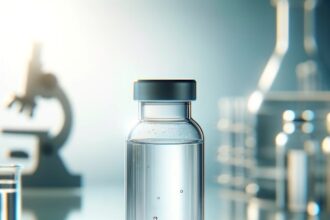If you were in any one of these locations between August 1, 1953, and December 31, 1987, you may qualify for Disability Benefit from MCBA Camp Lejeune, MCAA.
Camp Lejeune: Uncovering the Truth Behind the Water Contamination Crisis
Nestled on the coast of North Carolina, Marine Corps Base Camp Lejeune is a U.S. Marine Corps base that has become infamous for one of the most severe water contamination crises in American history. From the 1950s to the 1980s, the base’s water supply was tainted with hazardous chemicals, leading to devastating health consequences for those who lived and worked there. Many former residents and employees at Marine Corps Base Camp Lejeune have faced significant health challenges due to this contamination, sparking widespread concern and legal action.
The water at Camp Lejeune was found to contain volatile organic compounds (VOCs), including trichloroethylene (TCE), perchloroethylene (PCE), and benzene. These substances are linked to various cancers, birth defects, and other serious health conditions. Studies have shown that the health effects of exposure to these contaminants include specific birth defects, childhood cancers, and other adverse outcomes such as cancer and miscarriages. The contamination stemmed from multiple sources, including industrial spills, improper waste disposal, and leaking underground storage tanks. Despite early warnings and evidence of contamination, it took decades before the extent of the problem was fully acknowledged and addressed.
If you or a family member were stationed at Camp Lejeune and have suffered health issues that may be related to water contamination, Mass Tort America can assist. Our team is dedicated to helping affected individuals seek justice and compensation. We understand the gravity of your situation and are here to provide the support and legal expertise needed to navigate your claim. Reach out to us to discuss your case and learn how we can help you move forward.
Historical Background of Camp Lejeune’s Water Contamination
Camp Lejeune’s history of water contamination dates back to the 1950s when industrial solvents and chemicals were used extensively on the base. These substances, primarily used for cleaning and degreasing equipment, eventually seeped into the groundwater. Despite early indicators of contamination, it wasn’t until the 1980s that comprehensive testing revealed the true extent of the problem. The VOC levels found in the water supply were significantly higher than safe limits, putting thousands of Marines, their families, and civilian workers at risk.
Base Lejeune was established by the Marine Corps in Onslow County in southern Carolina. Camp Lejeune and Jacksonville are adjacent to the New River that flows towards Onslow Beach. Camp Lejeune covers approximately 150439 acres with 15 miles of beaches along the Atlantic. The base is the site of six major Marine Corps commands, along with two U.S. Navy commands, encompassing various units such as reconnaissance, intelligence, infantry, artillery, and amphibious units.
The contamination sources were varied and widespread across the base. The Hadnot Point Industrial Area, for example, was a major contributor, with leaking fuel tanks and waste disposal sites polluting the water. Similarly, the Tarawa Terrace area was contaminated primarily by PCE from a nearby dry cleaner. The combined effect of these and other sources resulted in a toxic mix that persisted in the water supply for decades. MCB Camp Lejeune is a major training facility occupying a large area with beaches, ideal for amphibious assault training, and is supplemented by several satellite facilities.
Despite mounting evidence and growing health concerns among the base population, it took until the late 1990s for the government to take substantive action. In 1999, Camp Lejeune was listed as a Superfund site, marking it for federal cleanup efforts. This designation was a crucial step in acknowledging the severity of the contamination and the need for extensive remediation efforts.
What Happened With Camp Lejeune?
In 1982, Navy researchers discovered a number of flammable dissolved organic compounds in water in Camp Lejeune. The contamination at Camp Lejeune’s water supply began in the late 1950s but the most contaminated reservoirs closed in 1985.
Why Is Camp Lejeune Such A Big Deal?
More than 200,000 people lived in Camp Lejeune from 1953 until 1987 and were potentially exposed. The health risks associated with exposure to contaminated water include cancer, adverse outcomes in pregnancy, birth defects, childhood cancers, and other related health effects. The contaminated waters of the camp are contaminated by military personnel and civilian personnel. March 18th 2020
How Did The Water At Camp Lejeune Become Contaminated?
A number of solvents can be found at Camp Lejeune, including trichloroethylene and benzene, from the water from the underground storage tanks, which have escaped the laboratory.
Sources of this contamination include spills in industrial facilities on-site and leaks of underground tanks and drums in dumps or storage areas. A water treatment plant unit at HadnotPoint was opened in 1943, however, no estimations were made for when the contamination began.
Health Impacts on Camp Lejeune Residents
The health impacts on those exposed to Camp Lejeune contaminated water have been profound and far-reaching. Studies have linked the chemicals present in the water to numerous health conditions, including several types of cancer, such as leukemia, bladder cancer, and kidney cancer. Additionally, non-cancerous conditions like aplastic anemia, Parkinson’s disease, and multiple sclerosis have been associated with the exposure. Scientific evidence has also highlighted adverse health effects, including studies of population exposures and toxicologic and epidemiologic evidence.
Pregnant women who lived at Camp Lejeune during the contamination period faced significant risks, with many experiencing complications such as miscarriages, stillbirths, and birth defects in their children. These birth defects often included neural tube defects, heart defects, and oral clefts, leading to lifelong challenges for the affected families caused by drinking water contamination.
The emotional and psychological toll on the residents has also been substantial. Many individuals have struggled with the anxiety and uncertainty of not knowing whether their health conditions are linked to their time at Camp Lejeune from contaminated drinking water. For those who have lost loved ones or faced debilitating illnesses, the journey has been particularly harrowing, compounded by the long wait for recognition and justice. The establishment of a disease registry has been crucial in tracking health conditions linked to the contamination and providing resources for medical care and support.
Contaminated Drinking Water
From a time when Marines had to drink contaminated water from Camp Lejeune water source at levels between 340 and 400 times allowed under security rules from 1953 to 1987. A 1974 law mandates the safe removal of solvents and warns that contaminated drinking water could result, and the solvent is still being dumped or stored near the base waterways for years. The well was shut down in the late 1980s, but he returned to the internet against the laws. The Camp Lejeune water source contained volatile organic compounds (VOCs) in 1982.
Is Camp Lejeune Open Today?
Located in Lejeune, the Visitor Center of Camp Lejeune is available between 9 p.m. and 8 p.m. and is closed on weekends and holidays, the U.S. Marines say.
Legal and Governmental Response to the Crisis
The legal and governmental response to the Camp Lejeune water contamination crisis has evolved over time. Initially, there was significant resistance to acknowledging the full scope of the problem. However, persistent advocacy by affected individuals and their families eventually led to legislative action. In 2012, the Honoring America’s Veterans and Caring for Camp Lejeune Families Act was signed into law, providing healthcare to affected veterans and their families for conditions related to the contamination.
Despite this legislative progress, many victims have sought further justice through legal channels. Numerous lawsuits have been filed against the federal government, seeking compensation for medical expenses, pain and suffering, and other damages. These legal battles have highlighted the need for greater transparency and accountability in addressing environmental hazards on military bases.
In recent years, there has been a renewed focus on supporting the affected population. Efforts have included establishing registries to track health conditions linked to the contamination and providing resources for medical care and support. The disease registry plays a crucial role in ongoing health studies to determine the relationship between exposure to contaminants and specific health effects. The government and various advocacy groups continue to work towards ensuring that all affected individuals receive the recognition and compensation they deserve.
Presumptive Conditions For Camp Lejeune
VA developed a probable service liaison for veterans, veterans’ reservists, and national guard members exposed to contaminants within the water supply of Camp Lejeune during a period of August 1, 1953, until December 31, 1987, and later developed illnesses.
Am I Eligible For VA Disability Compensation?
You can receive disability payment assuming the eligibility requirements have been fulfilled by the employer. All veterans must meet the above requirements. This must be true: You have to be diagnosed with one or more of these conditions and there is evidence that these conditions and exposures to toxic chemicals in drinking water are linked during this period at Camp Lejeune.
Can I Also Get Health Care Benefits?
Yeah. Depending on your services, you may receive a VA health insurance policy for your health care coverage. If you suffer from any of the 15 medical problems outlined above, there will never be a copayment for your care. How do people obtain the VA health insurance coverage for a medical condition?
How The PACT Act Affects Camp Lejeune Claims And Related Benefits
The Act honoring our promise to address toxic substances includes the people in Camp Lejeune who lived there. These laws are called the Camp Lejeune Justice Act in 2022. The Camp Lejeune Justice Act provisions allow Veterans Survivor’s Rights to obtain appropriate legal relief if contaminated water at Camp Lejeune is found to have been contaminated with contaminants. This authority may help you obtain a waiver from a lawsuit for a wrongful death claim based upon the facts or in fact based on any such claims. This bill expands health and benefit programs in VAs in case veterans have burned pits in their homes or have used toxic substances. Get information about the VA Benefit Act.
What Is The Average Payout For The Camp Lejeune Lawsuit?
How much is a typical salary for Lejeune Camps? Camp Lejeune’s water pollution settlements range from $10000 to over $1 million depending upon your situation.
The Department has offered several family options for Camp Lejeune through elective options. The payout offer for 2024 reached 96.6M. It’s still possible for Camp Lejeune to settle their claim and pursue an arbitration agreement. November
How Many People Have Applied For The Camp Lejeune Lawsuit?
Camp Lejeune lawsuit continues to grow and some families now get compensation. Currently over 700 civil lawsuits are registered with the Department of Justice with an estimated 190 million administrative claims being submitted.
Why Choose Mass Tort America for Your Camp Lejeune Case?
Choosing Mass Tort America to represent you in your Camp Lejeune case means partnering with a team that understands the intricacies of mass tort litigation and is committed to fighting for your rights. Our firm has extensive experience handling complex cases involving environmental contamination and health impacts. We are dedicated to providing personalized attention and support throughout the legal process, ensuring that your voice is heard and your needs are addressed.
Mass Tort America offers comprehensive legal services, from initial consultation and case evaluation to aggressive representation in court. Our team will work tirelessly to gather evidence, build a strong case, and pursue the maximum compensation possible. With our expertise and dedication, you can trust that your case is in capable hands. Contact Mass Tort America today at 800-356-4338 or visit our contact form at https://masstortamerica.com/contact/ to schedule a consultation and take the first step toward justice.
4o



















